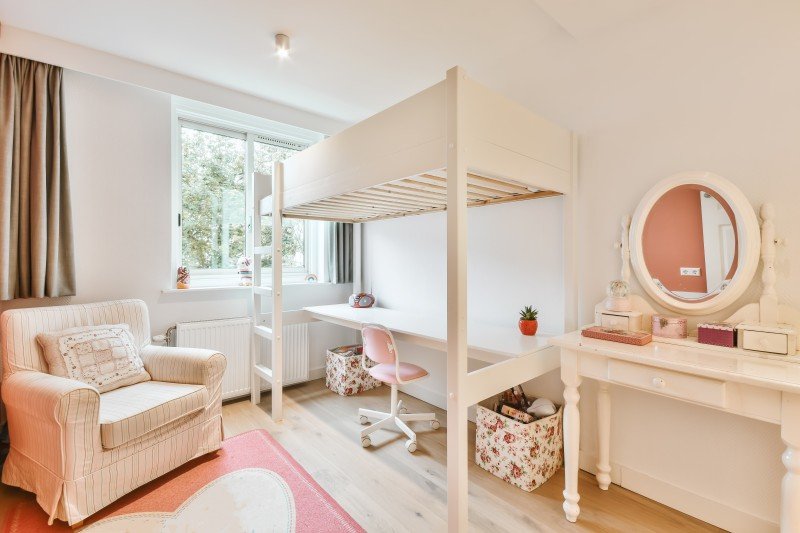A Comprehensive Guide to Children's Bunk Beds: Styles, Benefits, and Safety Considerations
Bunk beds have become a popular choice for families looking to optimize space and supply a fun sleeping environment for children. With Bunk Bed For Adults UK rosalynkovalchik.top , they offer an imaginative and practical solution for shared bed rooms, playrooms, and even guest lodging. This short article explores the various styles of children's bunk beds, their advantages, safety considerations, and answers some often asked concerns.
The Allure of Bunk Beds
Kid's bunk beds are more than just space-saving structures; they are also a gateway to daring dreams and creative play. Below is a comprehensive evaluation of their many benefits.
Benefits of Bunk Beds
- Space-Saving: Bunk beds efficiently utilize vertical space, making them a perfect option for smaller rooms.
- Lively Design: Many bunk bed styles include slides, camping tents, and themed aspects, triggering creativity and enjoyment.
- Partner Sharing: Bunk beds are ideal for brother or sisters sharing a space or accommodating pajama parties.
- Flexible Use: Some designs can be separated into two specific beds, offering versatility as children grow.
- Storage Options: Many bunk beds feature built-in drawer storage or shelves, further boosting their practicality.
Styles of Children's Bunk Beds
The range of bunk beds readily available today caters to various preferences and requirements. Below is a summary of some popular styles.
| Design | Description | Best For |
|---|---|---|
| Requirement Bunk Bed | A traditional style featuring one bed stacked above another. | Brother or sisters sharing a space. |
| Loft Bed | Similar to a bunk bed without the bottom bunk, enables for a workspace or play area below. | Restricted space for play/desk. |
| L-Shaped Bunk Bed | 2 beds arranged in an L-shape, often with extra sections for storage or play. | Special space designs. |
| Twin Over Full | A twin bed over a full bed, accommodating various sleep needs. | Growing kids and teens. |
| High Sleeper | Stands even greater than a loft bed, normally including a desk or play area listed below. | Older kids requiring more play/desk space. |
| Tent Bunk Bed | Bunk beds with a canopy or tent-like structure, producing a comfortable, enjoyable space. | Active and creative children. |
Secret Features to Consider
When selecting the best bunk bed for children, the following features deserve considering:
- Material: Bunk beds can be made from wood, metal, or a mix. Each has its distinct visual and resilience.
- Weight Capacity: Always validate the weight limit of the bunk bed to guarantee it can accommodate your children safely.
- Safety Rails: Ensure the leading bunk has durable rails to prevent falls.
- Ladder Security: A properly designed ladder ought to offer easy and safe access to the upper bunk.
- Ending up: Ensure any finishes are non-toxic and safe for children.
Safety Considerations
Security is paramount when it pertains to kids's bunk beds. The following standards need to be complied with:
- Age Appropriateness: Generally, children under six years old ought to not sleep in the upper bunk due to security risks.
- Strong Construction: Ensure the frame and materials are strong and can support the weight without drooping.
- Regular Maintenance: Periodically examine for loose screws, bolts, or other components that may require tightening.
- Clear Play Area: Keep the area around the bunk bed without toys and challenges to minimize tripping dangers.
Setting Rules for Safe Use
Establishing standards for bunk bed use will help make sure security:
- Limit Jumping and Climbing: Children ought to be advised against leaping from the top bunk and climbing on the sides.
- Supervising Sleepovers: Monitor young guests while they are using the bunk bed for the very first time.
- Educate on Ladder Use: Teach how to utilize the ladder safely, emphasizing the significance of facing the ladder when going up or down.
Regularly Asked Questions
1. What age is proper for a kid to oversleep the leading bunk?
A lot of manufacturers recommend that kids must be at least six years old to sleep in the upper bunk. This standard is created to alleviate the danger of falls.
2. Can bunk beds be tailored?
Yes, numerous manufacturers provide customizable alternatives, consisting of colors, products, and extra features like drawers or desks.
3. Are bunk beds safe for weight?
Bunk beds have weight limits, typically varying from 200 to 400 pounds, depending on the design and material. Constantly inspect the manufacturer's specifications.
4. How do I keep and clean a bunk bed?
Frequently examine for loose parts, keep the bed clean by wiping down surfaces, and guarantee the bed linen is fresh to promote a safe and sanitary sleep environment.
5. Can bunk beds be separated into specific beds?
Many bunk beds feature an option to separate them into two private beds, supplying long-term flexibility.
Children's bunk beds are more than simple furniture; they are a practical, versatile, and imaginative element of a child's space. With various designs offered and various security factors to consider to keep in mind, moms and dads can choose the perfect bed that fits their space, meets their kids's requirements, and imparts a sense of experience. By comprehending the benefits, styles, and security measures associated with bunk beds, families can develop a delightful and safe sleeping environment for their kids. Whether for siblings sharing a space or space-saving options, bunk beds stay a precious option for many homes.

